Biophilic design and ODYL
What is biophilic design?
Biophilic design by definition encourages the use of natural elements and processes as design inspiration in the built environment. Why? It is because the positive effects of exposure to nature originate from the biological bond between humans and the natural world. We have an innate connection with the natural world and exposure to it is therefore important for our wellbeing.
The main idea of biophilic design is to provide human beings with their much-needed exposure to nature since it is often lacking in modern day societies due to societal trends such as urbanization, building design, and lifestyle.
Source and a great overview of biophilic design: A Review of Psychological Literature on the Health and Wellbeing Benefits of Biophilic Design
How can biophilic design be applied?*
Direct Experience of Nature
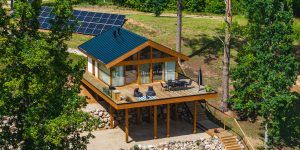
- Light
- Air
- Water
- Plants
- Animals
- Weather
- Natural landscapes
- Natural ecosystems
- Fire
Indirect Experience of Nature
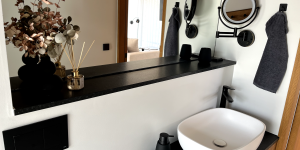
- Images of Nature
- Natural materials
- Natural colours
- Simulating natural light and air
- Naturalistic shapes and forms
- Evoking nature
- Information richness
- Age, change and the patina of time
- Natural geometries
- Biomimicry
Experience of Space and Place

- Prospect and refuge
- Organised complexity
- Integration of parts to wholes
- Transitional spaces
- Mobility and way finding
- Cultural and ecological attachment to place
“The Practice of Biophilic Design” by Stephen Kellert and Elizabeth Calabrese
ODYL and the direct experience of nature
One should have a full natural experience in an ODYL house.
Stunning environments

One study found that amundane view of nature is less restorative than a simulated view of nature containing water and more dramatic nature. It points to the significance of understanding the restorative potential of a natural view (perhaps off-grid?).
Light
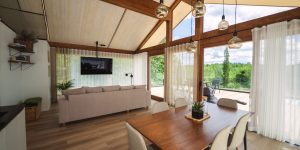
A psychological theory on the benefits of natural light has yet to be described, but who comes from a climate with limited sunlight from October to March appreciate every bit of natural light available.
Natural landscapes

Greenery from a window, which is listed under the natural landscapes and ecosystems attribute, has been shown in several studies as having beneficial effects on the wellbeing of building occupants.
ODYL and the indirect experience of nature
We believe the indirect experience of nature needs to be strongly present in the internal environment to “fit in”. Therefore, we have designed the interior part of the house to also follow the hypothesis of biophilic design.
Natural materials
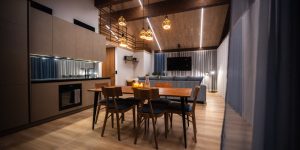
The limited research done demonstrates that the amount and type of material is important for perceived restorative quality and preference.
Evoking nature
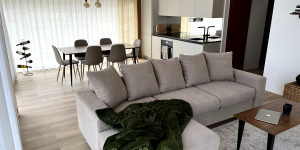
Creating a distinct visual relationships to nature. For example, we used an extra mirror in the kitchen to reflect the nature around even more.
Simulating natural light
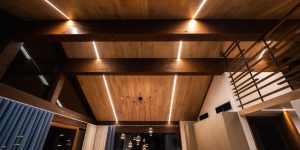
Dimmable lights that are regulated according to natural light (and weather) can create an environment which releases stress and acts as a restorative environment.
ODYL and the experience of space and place
For us, the space makes all the difference for experiencing the place. Space experience should make one feel like it’s their favourite place.
Attachment to Place

Places that are perceived to be highly restorative have been found to have strong place attachments for people.
Prospect
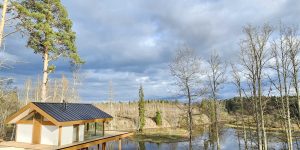
Results from a study demonstrated that nature with high levels of views and low levels of prospect were deemed restorative.
Wayfinding

Wayfinding is the ease at which a person can manipulate an environment. For example, use curtains to change “the feel”.
Summary
The literature review from Gillis and Gatersleber (2015) summarises that the evidence certainly supports certain attributes of biophilic design. This together with our view, we would conclude this topic in the following manner:

